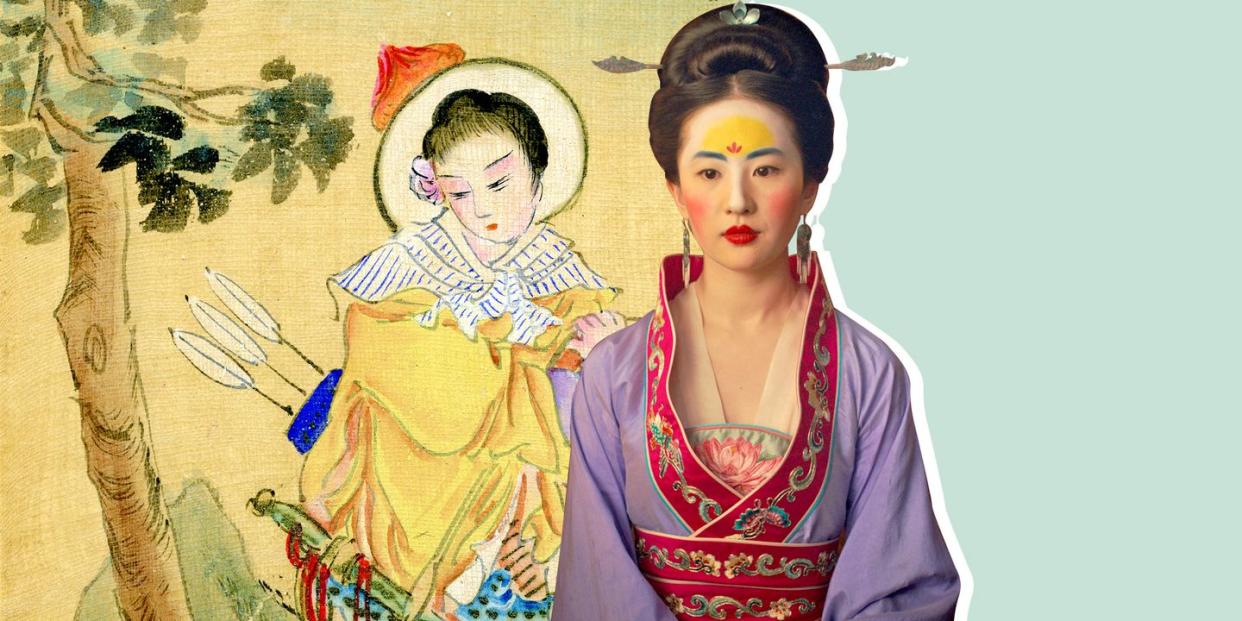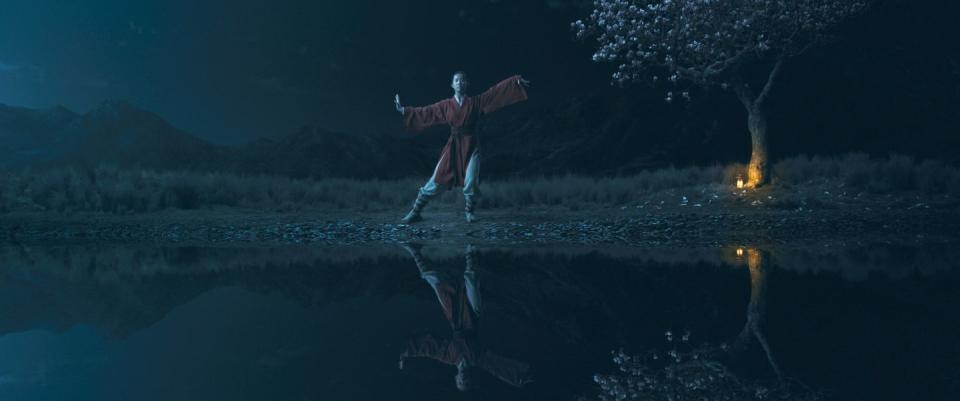The Real Story of Hua Mulan Is More Impressive Than Any Disney Version

If anyone can do a remake well, it’s Disney. The House of Mouse’s newest addition to its live-action remake canon is Mulan, which hits select theaters and Disney+ on Friday. But, much like the recent adaptation of The Lion King, expect major changes to the much-beloved story.
After continuously pushing the release date back for months due to the pandemic, Mulan is finally available to stream this weekend. The 1998 animated version is a classic and a fan favorite, but viewers should anticipate a more realistic story from the new film, as 2020’s Mulan follows its original source material (the ancient Chinese folk story called The Ballad of Mulan) much more closely. Though the 1998 version is based on this same legend, it pulls many Westernized additions out of thin air, like Mulan’s pint-sized dragon sidekick Mushu and love interest Shang.
While you might not be able to picture the story without these elements, they ultimately make for a more historically accurate film. You might even be surprised to find that the historical Mulan is even more badass than the Disney Princess you’ve come to love.
Who was the original Mulan?
Although there are many different stories about Mulan beyond the Ballad of Mulan, the original poem tells the tale of the brave female warrior known as Mulan, who was a soldier in China during the Northern and Southern dynasties period (between 420 and 589 CE). Much like in the animated movie, she disguised herself as a man and joined the army so that her father, a sickly veteran conscripted a second time by imperial decree, wouldn't be killed in combat.
That said, there are sizable differences between the '98 movie and the ancient poem. In the ballad, Mulan fought against Rouran invaders instead of the Huns, a historical inaccuracy that the new film takes care to correct. The original Disney film also collapses the historical timeline. In the Ballad of Mulan, Mulan served twelve years in the army, culminating in an offer from the Emperor to take a government post. Mulan declined the offer, then retired to her village in the province of Hunan. After spending over a decade posing as a man, she finally revealed her true identity to her brothers in arms, who were shocked.
Is the story true?
Was Mulan a real person, or simply a character in an ancestral story? Debate remains ongoing. Tour company China Highlights confirmed that a real war happened between the Northern Wei state and a Mongolic state called Rouran, based on Chinese historical documents. Plus, Smithsonian Magazine reported that scientists found physical evidence suggesting that female warriors once rode across what is now Mongolia.
When it comes to Chinese folklore, The Ballad of Mulan is unusual in that it contains no supernatural elements, suggesting that the story may be nonfiction. However, scholars generally disagree that Mulan existed. The story was passed down orally, leaving room for error and providing no historical evidence to prove Mulan’s existence. Regardless, the original poem has inspired countless film and stage adaptations throughout the 20th century.
How does the live action version differ from the animated movie?
In the live-action remake of Mulan, the familiar storyline remains intact, but many details have been changed. In addition to axing a few characters like Mushu, Grandmother Fa, and Li Shang, iconic scenes like Mulan cutting her hair and climbing up the pole to retrieve the arrow during training do not appear in the new film. Although none of the actors will break out into song like the 1998 movie, viewers can expect to hear familiar melodies.
“There are a number of songs that are iconic for the movie and tell a great version of the story and they are very helpful to us in how we’re putting the movie together,” producer Jason Reed told Collider. “It gets a little easier in animation to keep the tension and the reality in place and still have people break into song and sing to camera. We made the decision that we wanted to keep the world—even though it’s a fantasy—more grounded and more realistic, so those emotions really played and the threat is very real so we are using music in a slightly different way.”
Why is the new movie following The Ballad of Mulan rather than the earlier Disney version?
Although it might be hard to envision Mulan without some of its most beloved components, the filmmakers felt that the changes were necessary to tell a more culturally accurate story. Their goal was to faithfully adhere to the legend, not to keep each and every piece of a Disneyfied classic intact. It’s worth noting that Mulan will be released globally, with Disney targeting the large Chinese moviegoing market in particular; as a result, the creators felt it was important to keep their Chinese audiences in mind. Many decisions about adhering to the ballad were made in an effort to create a more real and relatable story, as well as to respect Chinese culture.
One important omission was Mushu, Mulan’s wise-cracking sidekick, who hit the cutting room floor due to the fact that many Chinese viewers disliked his character.
“This kind of miniature dragon trivialized their culture,” USC professor Stanley Rosen told The Hollywood Reporter.

Though Mulan did not have a surname in the original ballad, Hua Mulan eventually became her most commonly known name. According to Vulture, the ‘98 movie renamed her to Fa Mulan—a Cantonese rendering more closely related to the “Fa Mu Lan” of Chinese-American Maxine Hong Kingston’s memoir, The Woman Warrior. Some viewed the animated Mulan as a Western appropriation due to her Anglicized name. In the remake, Mulan once again comes from the Hua family.
"We had a lot of conversations about it ... [We wanted] to tell this story in a way that is more real, more relatable, where we don't have the benefit of the joke to hide behind things that might be uncomfortable and we don't break into song to tell us the subtext,” Reed told The Hollywood Reporter.
Meanwhile, director Niki Caro took several research trips to China before filming began, where she spoke with historians and brushed up on the original story.
"I certainly wasn't aware of how deeply important it is to Mainland Chinese — all children were taught it," Caro said. "[Mulan] is so meaningful that many places I went, people would say, 'Well, she comes from my village.' It was wonderful to feel that profound connection — but also terrifying."
The new version of Mulan might be different from the animated classic that we all know and love, but in an age when cultural appropriation has at long last come under the microscope, Disney’s efforts to honor Mulan’s authentic story are long overdue--and resonating with audiences. Glamour even reported that journalists are calling it Disney’s best-ever live-action remake. Not so sure? Stream Friday to judge for yourself.
You Might Also Like

 Yahoo News
Yahoo News 
